CES 2016: The Hottest PC Gear From The Show Floor

The CES PC Blitz
CES 2016 was a springboard for PC makers, which launched an impressive array of gear, from desktop models to laptops, 2-in-1s and Windows tablet PCs. Leading the charge were major vendors such as Dell, HP Inc. and Lenovo, followed by a raft of system builders and peripherals makers.
For PC makers, the Consumer Electronics Show is typically a challenge, as they play second fiddle to flashy players like smart TVs, Internet-enabled fridges and smartphone-controlled wearables.
But last week, PC makers did their best not to be sidelined. Lenovo and HP Inc. introduced a swath of svelte laptops and hybrid PCs built with maximum sex appeal and minimal, boxy designs. Dell enlisted some star power for its news conferences, bringing in Josh Brennan, pictured, aka "Big Head" of HBO's "Silicon Valley." And Dell also managed to hop on a major theme of CES: virtual reality. The PC maker's gaming PC division, Alienware, revealed a partnership with Oculus Rift for a midrange desktop that will be the brains behind its VR headset, launching later this year.
Here is a look at some of the hottest PC tech unveiled last week at CES.
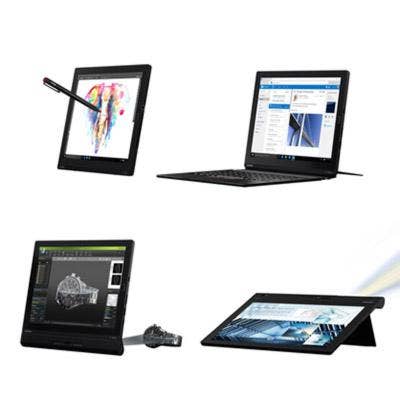
Lenovo CES Headliner: Modular X1 Tablet
Lenovo is hoping to hit it big with commercial and consumer buyers with its ThinkPad X1 tablet, which has three optional clip-on modules to add functionality. The base X1 tablet can be configured with Intel's Core m7 processor and has a 10-hour battery life. The tablet has a 12-inch display, runs Windows 10, weighs 1.75 pounds and is 0.3 inches thick.
The idea behind the ThinkPad X1's modularity is that you can build your own tablet to meet your needs, as opposed to getting stuck paying extra for unwanted features. For example, Lenovo offers a productivity module ($150) that can boost the tablet's battery life to 15 hours. The battery module, like all modules, just snaps onto the tablet.
The ThinkPad X1's presenter module ($280) includes a pico projector and an HDMI port. The module, according to Lenovo, can project a 60-inch image from a 2-meter range. The third module, a 3-D imaging module ($150), includes a rear-facing Intel RealSense camera.
ThinkPad X1 will be available in February starting at $900.
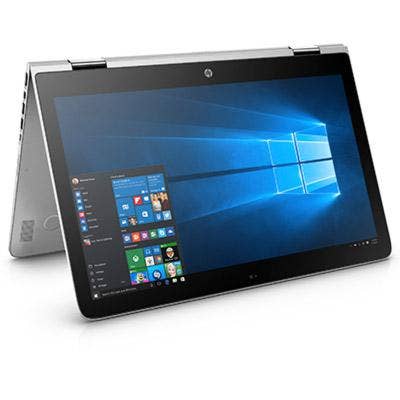
OLED Takes PCs By Storm At CES -- And They Look Gorgeous
HP Inc. released a Spectre x360 hybrid with an OLED display, just a day after Lenovo unveiled its first OLED hybrid, the ThinkPad X1 Yoga. And the next day, Dell announced its first 4-K OLED display on a 13-inch Alienware notebook, and Samsung followed suit with its Galaxy TabPro S laptop.
What's up with the sudden OLED love? We spoke to Dell, which told us that the OLED panels used by all PC manufacturers came from Samsung. Dell said that each of the PC manufacturers worked cooperatively to help Samsung bring down the cost of OLED panels, thanks to the scale anticipated by all four PC makers' offering a 13-inch OLED option in their lineups.
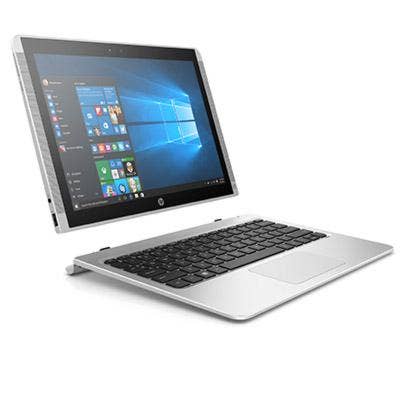
Business-Class Gadgets
HP Inc. proved last week at CES that it isn't messing around when it comes to keeping its edge as a leading innovative and reliable PC maker. HP unleashed a bevy of glitzy consumer and commercial tablets, 2-in-1s, convertible PCs and laptops. The goal, the company said, is to not just blur but obliterate the line between consumer and commercial PCs as millennials hit the workforce and demand style, mobility and performance.
One example is HP's new 12.1-inch Pavilion X2 12, which it bills as an affordable Microsoft Surface alternative. With a base configuration price of $500, this Pavilion can be configured with up to a 256-GB solid-state drive and features USB Type-C ports, a 1,920-by-1,280 resolution, 12-inch display and a keyboard. The system weighs 3.2 pounds and is 0.3 inch thick and can go just over eight hours between charges.
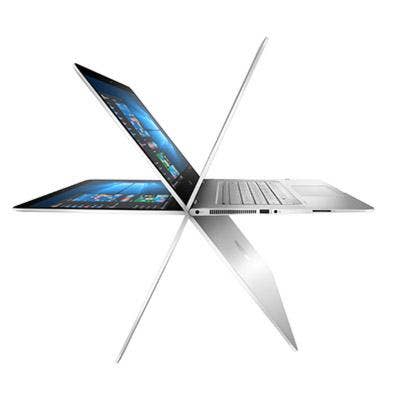
Spectre x360: 15.6-Inch, 13.3-Inch Convertibles
This revision of the popular Spectre 360 line is HP Inc.'s thinnest and lightest convertible PC to date. Specs include a 4-K, Ultra HD, 3,840-by-2,160-pixel touch screen, Intel's sixth generation i7 or i5 generation processor and up to 13 hours of battery life (with the i5 model). Standard features include a USB-C port (for charging and external peripheral connectivity), an HDMI port and a Mini-DisplayPort for external monitor expansion. The Spectre also features front-facing Bang & Olufsen quad speakers and a full-size backlit keyboard, and the 15.6-inch model weighs 4.12 pounds.
The 15.6-inch-diagonal Spectre x360 is expected to be available Feb. 14 at a starting price of $1,150. The 13.3-inch diagonal Spectre x360 is expected to be available in spring 2016; the pricing has not been confirmed. Both models can be configured with the OLED options; pricing not yet disclosed.
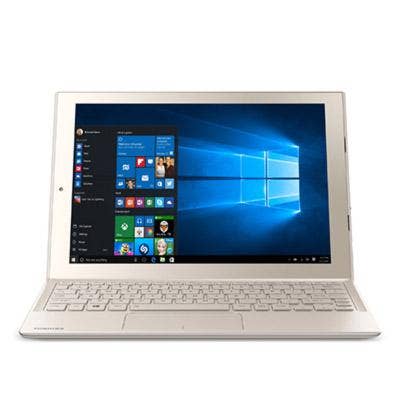
Toshiba DynaPad Tablet
Toshiba brought out a new DynaPad 12-inch tablet, which runs on Windows 10. This tablet features a full suite of business applications and a built-in stylus, the Wacom TruPen, which allows users to take notes directly on their devices.
On the outside, the DynaPad touts a TruBrite display with 1,920-by-1,280-pixel resolution and Corning Gorilla Glass 3. Within its carbon fiber body, the tablet packs an Intel Atom x5 Z8300 processor and features up to 64 GB of flash storage, as well as 4 GB of RAM.
Other features include an 8-megapixel rear-facing camera and 2-megapixel front-facing camera, as well as two USB 2.0 ports, a microSD card slot and an HMDI port. The DynaPad is available for preorder and will retail for $570.
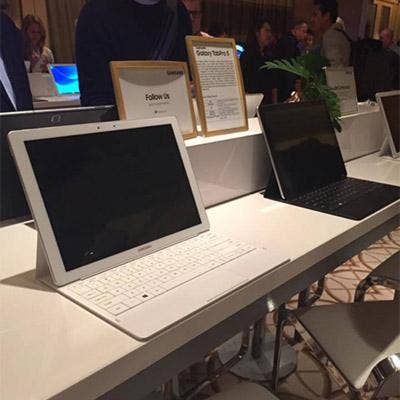
Galaxy TabPro S
Samsung showcased the Galaxy TabPro S, a 2-in-1 running the Windows 10 operating system. This new 6.3 mm-thick 2-in-1, which packs a sixth-generation Intel Core M processor, has a 12-inch Super AMOLED display and 2,160 by 1,440 resolution.
The body of the 2-in-1 contains a full-size keyboard cover that wraps around the device and includes a flexible hinge for dual-angle display -- and comes in the box with the TabPro S. A multi-port adapter for HDMI and USB Types A and C and a Bluetooth Pen are available for purchase separately.
The Galaxy TabPro S has up to 10 hours of battery life and 4 GB of RAM. The device will be available by the end of February and will be in the $999 price range, according to Samsung.
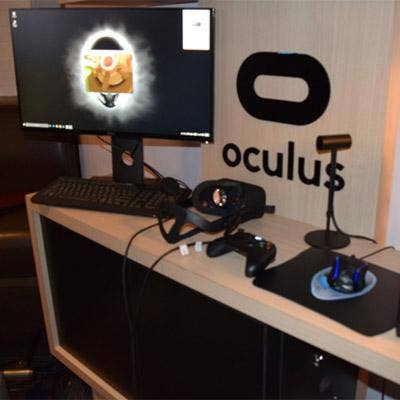
Virtual Reality Comes Down To Earth
The amount of hyperventilating over virtual reality headsets has been absurd in the tech world for years. Finally, at CES 2016, VR became real.
Oculus Rift unveiled pricing ($600) and availability of its headsets, and HTC unveiled a big update to its VR kit called Vive Pre. HTC revealed that preorders for Vive start Feb. 29 with hardware shipping in April; pricing is still an unknown.
At CES, we also learned how much a PC to run the virtual reality headsets would cost. As less than 1 percent of the world's computers are powerful enough to run virtual reality, according to Nvidia, the question remains, how much will we have to fork over on top of the $600 (or so) for virtual reality headsets?
Dell said it's working with Oculus Rift to cut the price of its $1,200 X51 Alienware midrange desktop PC to $1,000 when users buy it with the $600 Oculus Rift headset, bringing the grand total to $1,600.
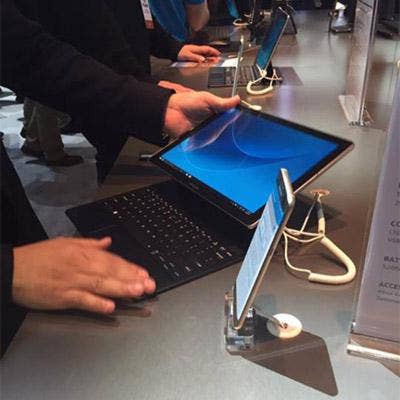
Samsung Galaxy TabPro S
Samsung's Galaxy TabPro S, a 2-in-1 tablet running on Windows 10, made waves at CES for its striking similarities to Microsoft's Surface Book.
The 6.3 mm-thick tablet comes in the box with a full-sized keyboard cover that wraps around the device and includes a flexible hinge for dual-angle display. The TabPro S packs a sixth-generation Intel Core M processor and has a 12-inch Super AMOLED display with 2,160 by 1,440 resolution. It also features a multi-port adaptor for HDMI, USB Type A and C, and a Bluetooth pen that is available for purchase separately.
With 10 hours of battery life and 4 GB of RAM, this device will be available for purchase by the end of January, and will cost around $999.
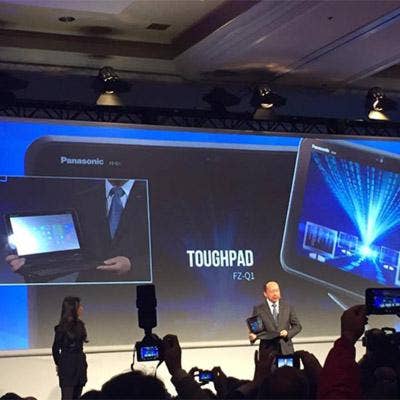
Panasonic ToughPad FZ-Q1
Panasonic unveiled a ruggedized tablet as part of its Toughpad lineup at CES.
The 12.5-inch tablet is geared toward point-of-sale retail and small business applications, and runs on Windows 9.1 Pro. The Toughpad features a high-definition, touch-screen display and easy-grip, ruggedized-bottom cover, as well as up to 9 hours of battery life and USB 3.0 and Micro SDxc ports.
The Toughpad FZ-Q1 comes with the option of either a performance version packing the Intel Core i5-4302Y vPro processor, which will cost $1,700, or a more standard version packing the Intel Celeron processor N2807 for $1,000. The Toughpad FZ-Q1 will be available in March.
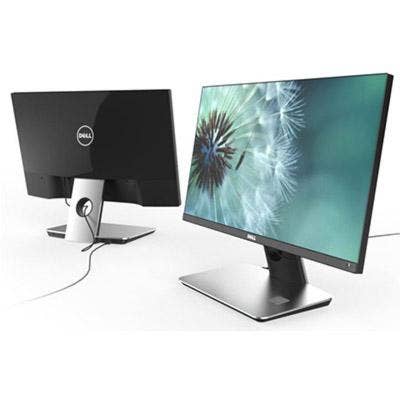
Dell 23 Wireless Monitor
Finally, Dell took the wraps off its newest wireless monitor model, the wireless s2317HWi. This 23-inch monitor brand contains a full HD display with 1,920 by 1,080 resolution and wireless connectivity via Miracast and Bluetooth. It contains a sleek, high-gloss design with thin, glossy bezels and HDMI connectivity, and 2 USB 2.0 ports. In addition, this monitor features built-in dual 3W integrated speakers.
The monitor displays content from Windows laptops and Android smartphones or tablets on a single screen without wires and allows users to manage content and charge a Qi- or PMA-compatible smartphone on the accompanying wireless charging stand.
The Dell 23 Wireless monitor will be available March 31 starting at $429.